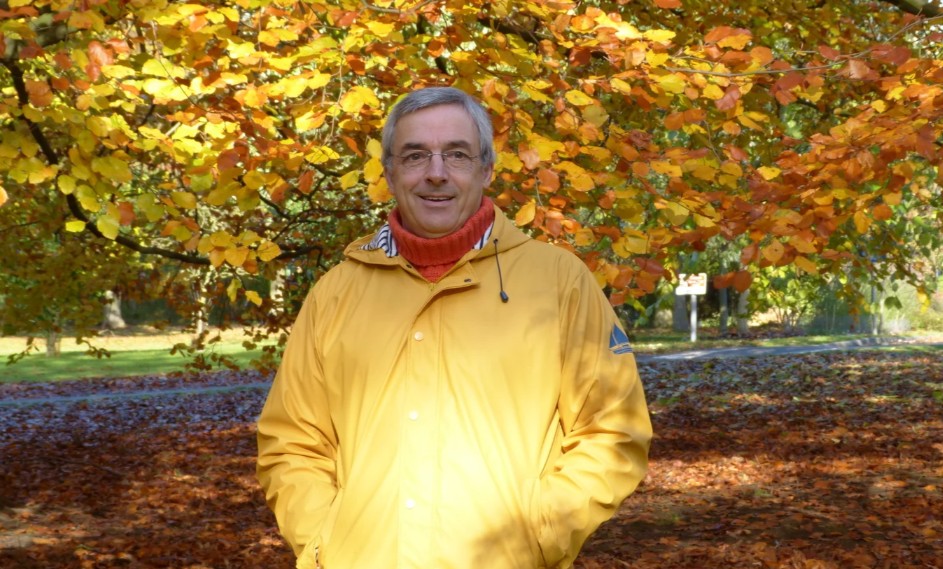Nick and John have been mulling over – supported by a dram or two – the issues associated with producing heavily smoked whiskies based on peat – a limited commons resource taking thousands of years to create. Nick, has for many years been visiting a variety of Scottish Islands by bicycle and this year was no exception. A trip to Islay, with further hops to Colonsay, Tiree and Coll was blessed with exceptionally good weather, despite this year being unusually wet and cold.
One of the iconic images in this part of Scotland are large piles of peat that are cut and left to dry, and then used as fuel for heating, and on Islay of course, in the creation of the numerous distinctive malt Whiskies! For those that appreciate the products of the Islay distilleries, life would be much poorer without recourse to a ‘wee dram’ of those heavily smoked and ‘peaty’ whiskies.

Peat is formed when plant material decomposes in a wet environment in the absence of Oxygen, at a very slow rate – around 1mm/year. Much of the peat in existence has formed since the retreat of glaciers at the end of the last ice age, around 12000 years ago, taking roughly 1,000 yrs to produce a metre in depth of peat. But of course, humans can use it up a lot more quickly than it takes to form, creating a time lag problem familiar to those studying renewable energy where resource production (the supply) can easily be outstripped by demand and utilisation.

Many areas of peat are on private land but some of the peat bogs in Scotland are held in common, with the right to cut turf or peat for fuel known as ‘Turbary’, and this right is exercised widely on the Inner and Outer Hebrides, where you frequently see piles of peat drying out – and often people cutting them in the traditional manner using a tairsgeir. You also become aware of the distinctive smell of it being burnt for heat – which even in summer is a regular event. Traditionally of course it was the sole source of fuel for heating and cooking in some of these areas, of great significance due to the lack of trees or fossil fuel resources. More lately, there has been something of a revival due to the increasing cost of fuel and prevalence of fuel poverty.
Common land is much less widespread in Scotland compared to England and Wales, due to the extent of private landownership (an excellent description can be found in ‘Commonland in Scotland – A Brief Overview’ by Wightman, Callander and Boyd; further publications by Wightman are available on his Website/Blog – covering similar topics related to land use in Scotland). However, common land in Scotland does shares many similarities to that of England and Wales in that the majority is on the form of grazing pastures (Crofting Common Grazings) covering 7% of the Highlands and Islands. Many of the Crofting Common Grazings are on peat land and as Wightman, et al. (2004) have noted, this provides scope for engaging with carbon credits markets due to the amount of carbon locked up in peat reserves.
Peat plays a key role in production of some malt whiskies. Some will tell you that it is the water draining off the peat that gives Scottish whisky its distinctive flavours, but on Islay much more important is the burning of peat to dry and halt the germination of the barley that imparts strong smoky flavours into the whisky. Bruicladdich produces the world’s most heavily peated Whisky – in the form of Octomore at levels of 160-258ppm, depending upon the version (Ardbeg 10 year old ranges from 55-65ppm by comparison).

On Islay, some of the Whisky distilleries no longer smoke their own barley – with the Port Ellen maltings doing this for them, using locally cut peat. A number still do however, one of which is Laphroaig, and they have their own peat beds on the island – where peat is still cut in the traditional manner (for those who know Islay – the peat beds are on the A846, close to the golf course and airport, and are now marked with a Laphroaig sign).

Scotland owes much of its identity to its unique landscape, of which peatlands are an important part, covering over 20% of its area. Peat beds require careful management and last year SNH published a consultation paper regarding their future management to ensure that the resource is retained for future generations. A commons resource that takes thousands of years to produce, provides a cheap and local fuel resource, contributes to landscape value, potentially operates as a carbon storage container, is an essential ingredient in the local economy, and yet can be used up in hundreds of even tens of years, needs very careful management. This is an area where private appropriation of the resource may appear to provide some respite from the pressure of market forces that drive up the prices for a resource with (short-term) limited supply. But demand for whisky continues to rise (production more than doubled over the period 1981-2012[1]) and privatisation often means the resource goes to the highest bidder, with short-term profit maximisation in mind. As noted above, however, some of the distilleries own and manage their local peat beds responsibly, and in recognition of the high value of this resource, are implementing technological changes to maximise its use (for example through grinding the peat and spreading it on a wood fire, or through re-circulating the smoke to maximise its effects) but given the long duration time required for peat formation, these are only stop-gap measures. Ultimately, with current production levels and increasing demand, but incredibly slow renewal, the peat will run out.

A resource such as peat, where the time periods for production and utilisation of the resource are nowhere near synchronized, provides some of the most intractable commons management problems. Even if those who don’t appreciate good whiskey may benefit from the landscape and biodiversity contributions of peat bogs, or the locking up of carbon, and of course the local people benefit from access to a local fuel source and essential ingredient of the local economy. Over-production and stripping of peat bogs are essentially irreversible actions, at least in the time-frame in which human societies operate, and peat can be considered alongside other shared resources such as genetic diversity, plant communities, and soils, where overuse can result in irreversible change.

Understanding the shared nature and value of such resources is the first step to finding long-lasting solutions. The second is more difficult but may require changes in governance arrangements and development of new institutions and forms of ownership where community, economic, and ecological values are represented and deliberated to ensure the resource can be managed to enable the long duration natural cycling that is required to balance demand and supply. For us, the trade-off may be even harder – ‘would we give up the heavily smoked whiskies of Islay to preserve the peat bogs?’
These are difficult questions which drive the search for solutions based on collective action theory and principles of commons management. Topics such as these are included in our Commons Management & Governance – Short Courses in particular the ‘Managing our Common Resources‘ course – which is due to start on September 28th.
Finally, Nick can heartily recommend the Warehouse Experience at Bruichladdich (thanks Raymond!) and the Distillers Wares tour at Laphroaig – just don’t take your car to them and expect to be able to drive afterwards!!
References
Callander, Robin Fraser (1987), A pattern of Landownership in Scotland: With Particular Reference to Aberdeenshire
[1] Scotch Whisky Association Statistical Report 2012. http://www.scotch-whisky.org.uk/media/62024/2012_statistical_report.pdf



